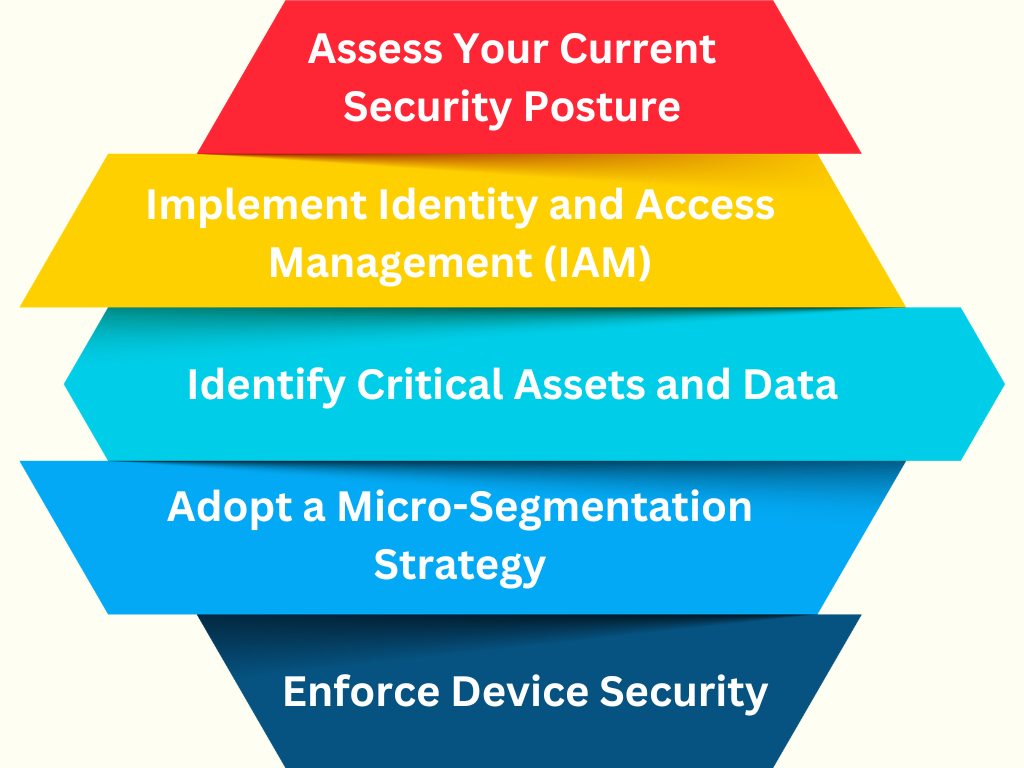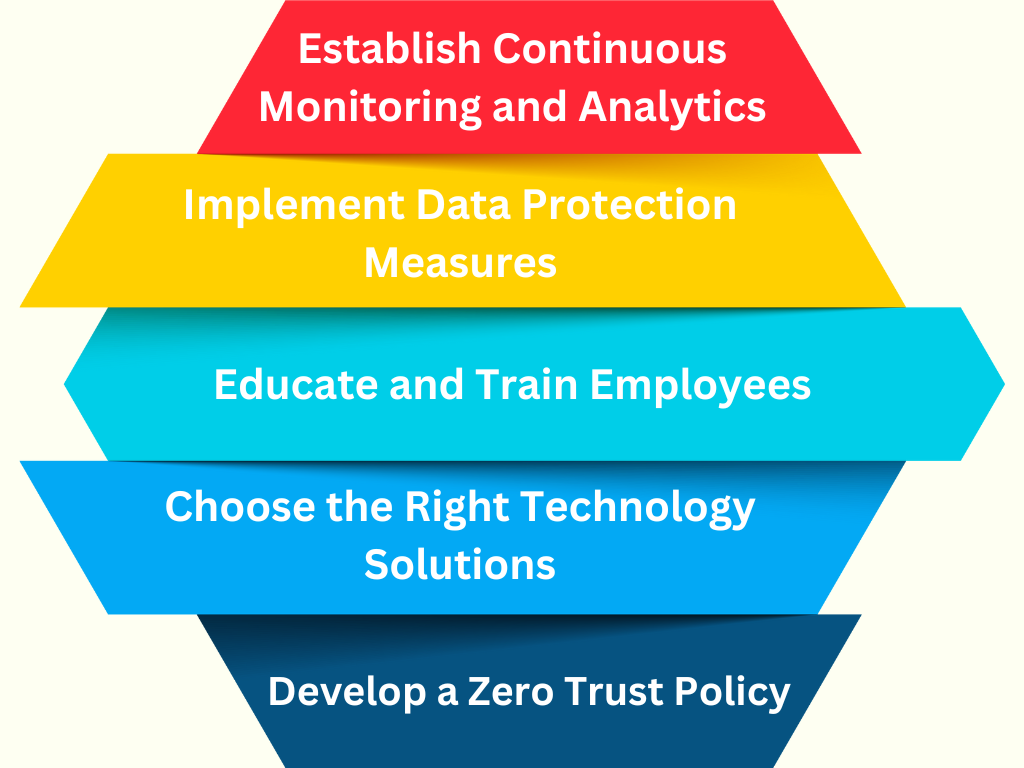10 Steps, How to Implement Zero Trust Architecture in Your Organization
In an era where cyber threats continue to evolve and become increasingly sophisticated, traditional security models based on perimeter defense are no longer sufficient. The rise of remote work, cloud services, and mobile devices has expanded the attack surface, making it crucial for organizations to adopt a more robust security framework. Zero Trust Architecture (ZTA) offers a solution by shifting the focus from perimeter security to a model that assumes no entity, internal or external, can be trusted by default. This blog will provide a detailed guide on how to implement Zero Trust Architecture in your organization, ensuring a secure and resilient cybersecurity posture.
Understanding Zero Trust Architecture
Zero Trust Architecture is a cybersecurity model that requires strict identity verification for every individual and device attempting to access resources, regardless of whether they are inside or outside the organization’s network. The core principle of Zero Trust is “never trust, always verify.” This approach minimizes the risk of data breaches by limiting access to sensitive information and ensuring continuous authentication and authorization.
Key Principles of Zero Trust
- Verify Explicitly: Authenticate and authorize every access request based on available data points such as user identity, location, device health, and more.
- Use Least Privilege Access: Limit user access to only the resources they need to perform their tasks, reducing the risk of unauthorized access.
- Assume Breach: Operate with the assumption that a breach has already occurred, and take proactive measures to minimize its impact.
Steps to Implement Zero Trust Architecture


1. Assess Your Current Security Posture
Begin by evaluating your existing security infrastructure to identify gaps and vulnerabilities. This assessment should include:
- Network architecture
- Access controls
- User authentication methods
- Device management policies
- Data protection measures
Conducting a thorough risk assessment will help you understand where your organization stands and what needs to be improved to align with Zero Trust principles.
2. Identify Critical Assets and Data
Determine which assets and data are most critical to your organization. These may include customer information, intellectual property, financial records, and other sensitive data. Classifying your assets will help you prioritize protection efforts and implement appropriate access controls.
3. Implement Identity and Access Management (IAM)
Identity and Access Management is a foundational component of Zero Trust Architecture. IAM solutions ensure that only authorized users can access the organization’s resources. Key components of IAM include:
- Multi-Factor Authentication (MFA): Require users to provide multiple forms of verification to access resources.
- Single Sign-On (SSO): Simplify the login process while maintaining strong security measures.
- Role-Based Access Control (RBAC): Assign access permissions based on users’ roles and responsibilities.
4. Adopt a Micro-Segmentation Strategy
Micro-segmentation involves dividing your network into smaller segments, each with its own security controls. This approach minimizes the impact of a potential breach by containing the threat within a specific segment. Steps to implement micro-segmentation include:
- Identifying network segments based on business functions
- Implementing access controls for each segment
- Continuously monitoring segment traffic for anomalies
5. Enforce Device Security
Ensure that all devices accessing your network meet security standards. This can be achieved through:
- Endpoint Detection and Response (EDR): Monitor and respond to threats on endpoint devices.
- Mobile Device Management (MDM): Manage and secure mobile devices used by employees.
- Device Health Checks: Regularly verify that devices are updated and free from vulnerabilities.
6. Establish Continuous Monitoring and Analytics
Zero Trust requires continuous monitoring of user activities, network traffic, and access requests. Implement tools and practices to:
- Detect and respond to anomalies in real-time
- Use behavior analytics to identify potential threats
- Generate reports for compliance and auditing purposes
7. Implement Data Protection Measures
Protecting sensitive data is a critical aspect of Zero Trust Architecture. Key measures include:
- Data Encryption: Encrypt data both in transit and at rest to prevent unauthorized access.
- Data Loss Prevention (DLP): Implement policies and tools to prevent data leaks.
- Secure Backups: Maintain secure and up-to-date backups to ensure data recovery in case of an incident.
8. Educate and Train Employees
Human error remains a significant security risk. Conduct regular training sessions to educate employees on Zero Trust principles and best practices. Topics should include:
- Recognizing phishing attacks
- Using secure passwords
- Following access control policies
9. Choose the Right Technology Solutions
Implementing Zero Trust Architecture requires the right set of tools and technologies. Consider solutions such as:
- Identity and Access Management (IAM) systems
- Security Information and Event Management (SIEM) tools
- Next-Generation Firewalls (NGFW)
- Cloud Access Security Brokers (CASB)
- Zero Trust Network Access (ZTNA) solutions
10. Develop a Zero Trust Policy
Create a formal Zero Trust policy that outlines the organization’s security objectives, access control procedures, and incident response protocols. This policy should be regularly reviewed and updated to address emerging threats and changes in the IT environment.
Benefits of Zero Trust Architecture
Implementing Zero Trust Architecture offers several benefits, including:
- Reduced Risk of Data Breaches: By limiting access and continuously verifying identities, Zero Trust reduces the likelihood of unauthorized access and data breaches.
- Improved Compliance: Zero Trust helps organizations meet regulatory requirements by enforcing strict access controls and maintaining audit logs.
- Enhanced User Experience: Solutions like SSO and MFA provide a balance between security and convenience for users.
- Increased Visibility: Continuous monitoring and analytics provide valuable insights into user activities and potential threats.
Challenges in Implementing Zero Trust Architecture
While Zero Trust Architecture offers significant benefits, organizations may face challenges during implementation, such as:
- Cultural Resistance: Employees may resist changes to established workflows and practices.
- Complexity: Implementing Zero Trust requires a comprehensive approach that can be complex and time-consuming.
- Cost: Investing in new tools and technologies can be costly for some organizations.
To overcome these challenges, it is essential to:
- Gain executive buy-in
- Communicate the importance of Zero Trust to all stakeholders
- Develop a phased implementation plan
Conclusion
In today’s evolving threat landscape, traditional security models are no longer sufficient to protect organizations from advanced cyberattacks. Implementing Zero Trust Architecture (ZTA) is a proactive approach to secure your digital assets by continuously verifying users, devices, and network activities, regardless of whether they are inside or outside your perimeter. It operates on the principle of “never trust, always verify,” ensuring that no entity is automatically trusted without authentication and authorization.
Adopting Zero Trust involves several steps, including securing user identities, applying multi-factor authentication, limiting access based on roles, and monitoring network traffic in real time. Segmentation plays a key role by isolating sensitive resources and minimizing the attack surface. Additionally, integrating endpoint security and encrypting data in transit ensures that communication remains secure. Implementing these strategies helps reduce insider threats, mitigate unauthorized access, and prevent lateral movement by attackers within the network.
However, transitioning to Zero Trust is not a one-time project; it’s a continuous process. Organizations must regularly assess and update their security policies, adapt to emerging threats, and ensure that security measures are integrated across all endpoints, cloud environments, and applications.
Zero Trust Architecture enhances visibility and control over your organization’s digital infrastructure, making it harder for malicious actors to breach systems. By limiting access to only verified users and devices and monitoring for any anomalies, organizations can significantly reduce the risk of data breaches and unauthorized access.
In an era where cybersecurity threats are constantly evolving, Zero Trust Architecture provides a future-ready framework that safeguards your organization’s critical assets. Investing in Zero Trust is not just a security upgrade; it’s a mindset shift toward building a resilient, secure, and adaptable digital infrastructure. Embracing this approach will empower your organization to stay one step ahead of cyber threats and foster long-term trust in your security posture.






